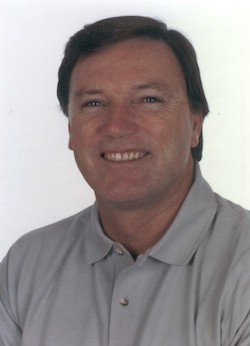Robbie E. Doyle
Salem, Massachusetts
August 13, 1949
An Artist and a Scientist of Sailing
Robbie Doyle grew up sailing in Marblehead, MA. and credits many sailing mentors for his accomplishments – including Ted Hood, Jon Wales, Dr. Jerry Milgram, Dave Smith and his older brother, Richard. Young Robbie won the Sears Cup twice, was a three-time All American at Harvard, was an alternate on the 1968 US Olympic Team, won the America’s Cup as the mainsail trimmer for Ted Turner aboard the 12 Metre Courageous in 1977 and founded his own sail loft, Doyle Sails, all before he was 32 years old.
Doyle Sails became a leader in building fast sails for one-design boats like the Etchells and J Boat classes. Recognizing the growth of the building of superyachts, Doyle became a leader in providing sails. He explained, “We spent a lot of time on design. Big yachts create tremendous loads and forces on the sails and the rigs. It is important to get the right balance.”
The Etchells class inspired Robbie to create a day sailor that evolved into the e33. The “e” stands “easy.” The boat is 33 feet long, features a big cockpit and has a simple rig with no winches. In 2009 he was elected commodore of the Eastern Yacht Club in Marblehead, MA. To grow participation in racing Doyle hired a collegiate sailing coach to work with members on their technique during the summer racing season. The initiative was a huge success. The club purchased a fleet of boats for members to use and built up team racing. Reflecting on his time as commodore Doyle says, “It’s fun to sit at a council meeting every month and talk about ideas, and then watch people go out with passion and make things happen.”
During his America’s Cup years, Doyle experimented with sail shapes through a trial and error method. Speed testing and racing was the best way to confirm if a specific sail shape was faster. In more recent years he has been using computational fluid dynamics (CFD) to develop sails, particularly for the superyachts. He explains, “CFD is more accurate than towing tanks and wind tunnels. With this evolution, we can learn quickly what makes a boat sail faster. CFD has been a big help with our one-design sails too.”
During the summer of 2019, Doyle was still racing 12 Meters off Newport and helping his team to sail fast.
— Gary Jobson


